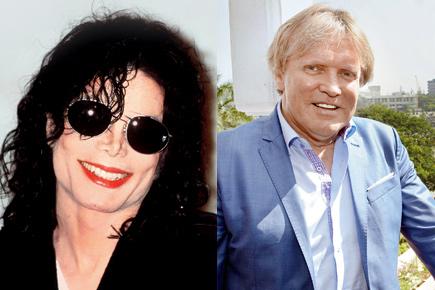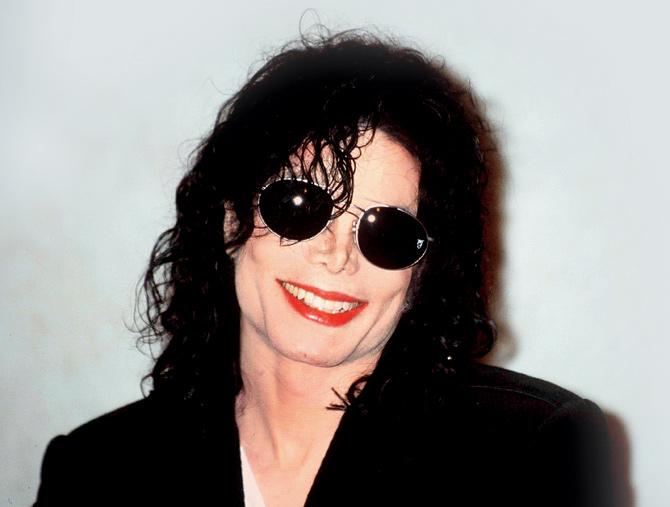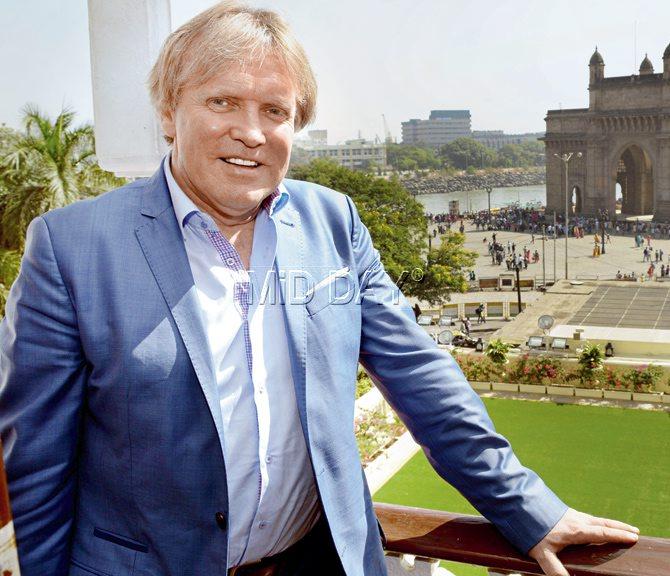As he promotes his book in Mumbai, the Irish doctor behind Michael Jackson’s cosmetic surgeries argues why he couldn’t have been a child sex abuser or drug addict

Michael Jackson and Patrick Treacy
 Patrick Treacy has had an interesting life. So interesting, that it almost sounds like the plot of a thriller. Treacy, 56, who hails from Garrison in County Fermanagh, Ireland, has worked with the poor in Africa; fought off Saddam Hussein’s goons in Baghdad as a humanitarian worker, and worked on the faces of Madonna, Jay-Z and Bono. But, six years after Michael Jackson’s death, the pop icon remains Treacy’s most famous client, and closest friend. Excerpts from an interview with the doctor, who is in India to promote his latest book, Behind The Mask: The extraordinary story of the Irishman who became Michael Jackson’s doctor.
Patrick Treacy has had an interesting life. So interesting, that it almost sounds like the plot of a thriller. Treacy, 56, who hails from Garrison in County Fermanagh, Ireland, has worked with the poor in Africa; fought off Saddam Hussein’s goons in Baghdad as a humanitarian worker, and worked on the faces of Madonna, Jay-Z and Bono. But, six years after Michael Jackson’s death, the pop icon remains Treacy’s most famous client, and closest friend. Excerpts from an interview with the doctor, who is in India to promote his latest book, Behind The Mask: The extraordinary story of the Irishman who became Michael Jackson’s doctor.
ADVERTISEMENT

Q. How important a role does MJ play in the memoir?
A. Everybody thinks the book is about him, but I didn’t set out to write about Michael. Most authors know they are going to write a memoir, years before they actually do. The subject matter to be included becomes evident later on. The core of my book is about the time recession hit Ireland; the loss of love (break-up with girlfriend Trish); and surviving an HIV needle stick injury from a heroin addict in Dublin. There is also stuff about my childhood. Michael Jackson was the tail I put to the book. Then, the tail started wagging.

Pic/Pradeep Dhivar
Q. When did you start working on celebrity clientele?
A. When I started off in aesthetic medicine, the field was nascent. I was lucky that at the turn of the last century, three things happened. First, Botox became popular. Then Hyaluronic Acid (wrinkle fillers) came into being and finally, Intense Pulsed Light (IPL) Photorejuvenation (a treatment for brown spots, redness, age spots, broken blood vessels, and rosacea) was invented. I was one of the first to offer them all together. And, because I was a sort of a pioneer, I received a flood of clients, including celebrity Indians, who I cannot name. I remember coming here to see an Indian actor many, many years ago. I had to take off to Dubai because one of the papers got a picture of the two of us. He had a hair transplant and he didn’t want anybody to know. He’s probably one of India’s most famous actors.
Q. You mention your confrontation with Saddam Hussein’s son, Uday. Tell us more.
A. Uday had been shipped off to Switzerland because he had killed someone. Then he was brought back into Baghdad just before the Gulf War. One night at the Palestine Hotel, I noticed him harassing one of the blonde nurses. He was inebriated and being aggressive. I went over to him and asked him to leave the lady alone, and walked him over to his table. When I sat down, his security guards flashed their guns at me and Uday started picking a fight. But then, other men intervened and stopped it from snowballing into an ugly brawl. We did not know who he was. After the six of them left, somebody said, ‘Oh, my god! Do you know he is Uday, Saddam Hussein’s son? You were about to be killed!’ It was a close shave.
Q. How did you meet Michael Jackson?
A. In 2006, a young African-American woman, who I think was his Nani or the mother of his children, was waiting in the green room of my clinic, and told me she represented a celebrity. After her, Michael entered. He wore a black fedora, his curly hair was tied at the back, and he flashed his infectious smile. He came up to me and said, “Hi, Doctor Treacy. I’m Michael Jackson. I've heard much about you. Thank you for helping the people of Africa.” He was carrying with him an article I had written, which I had received an award for. He read it out to me. “I’d like you to be my doctor,” he said. I remember, during one of his visits to my clinic, he picked up a medical book from my office and opened it to a picture of a black child with black and white skin. He told me, “I know the pain that child feels,” and then he pulled up his trouser leg and I saw his skin was black and white. His whole body was [like that]. He was suffering from vitiligo.
Q. How did you bond over Africa?
A. I was jabbed by an HIV needle while drawing blood from a heroin-addict in a hospital in Dublin. Luckily, it didn’t connect, but the incident inspired me to work with HIV patients in Africa. At that time, it was seen as a black person’s disease. While I was working there in the 1990s, MJ was working towards the same in America. He went down to Africa to offer humanitarian assistance by scheduling a concert with Lionel Ritchie, donated $24 million, and was working with Nelson Mandela. So, it was almost like we both went and fought on the wrong side of the war, but won the battle.
Q. And then you became friends?
A. I think it was because he started trusting me over a period of time. I wasn’t particularly star struck. In fact, I hadn’t even heard much of his music. So, when he realised that I wasn’t trying to get anything off him, he opened up. Michael, I felt, was a broken man. He was let down by what America had done to him. When I’d seen him with his kids, I realised that the world had got him totally wrong. He was a really a nice guy, and he wouldn’t harm children in any way. I felt he was in danger of being killed. He mentioned to me on a couple of occasions that he was scared for his life. Another side to him that people don’t know of is that he was a prankster. He was joking and playing games all the time.
Q. Then what led to the implication of child abuse?
A. When people said there was a childish element to Michael, there was. He seemed to like hanging around with children and play with them. I think that’s different from being sexually involved with children.
Q. You say he was not a drug addict. What do you think led to his death?
A. His death came as a shock because I remember him telling me that he wouldn’t be sedated without an anesthetist present. In all the time I knew him, he had not used any drugs. If the defence lawyers are trying to say that Michael killed himself with an overdose of propofol, it couldn’t work like that. It’s a drug that needs to be administered; you can’t put a drip into yourself. That was the line of defense, which they quickly dropped because a lot of people like me, with a knowledge of science and a bit of common sense, began questioning the authenticity of that statement. A part of me says it was either an accident by a bad doctor or was planned, because he had often told me he was going to be killed. Nobody investigated this angle. Those questions were never asked.
Q. You end the book with a chapter on him.
A. If I had to write it again, I would end the book differently with the bit about winning five awards for my work. But the publishers almost didn’t let me finish it. They almost took it away from me (laughs).
 Subscribe today by clicking the link and stay updated with the latest news!" Click here!
Subscribe today by clicking the link and stay updated with the latest news!" Click here!






